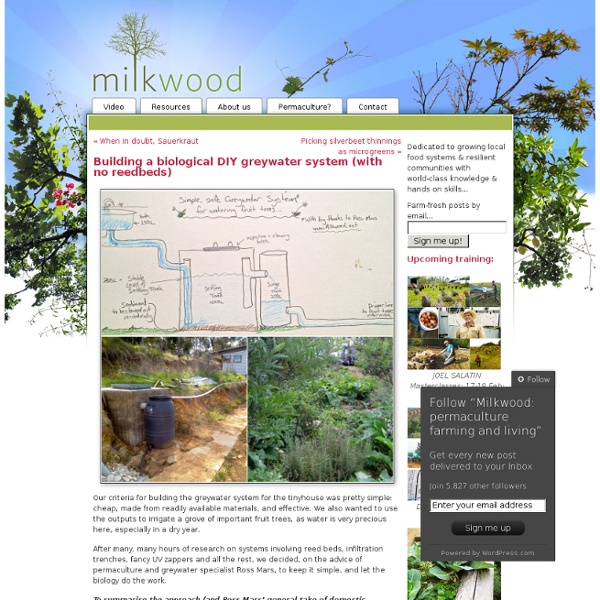Building a biological DIY greywater system (with no reedbeds)

Launches Hydroponics and Aquaponics Sensor Platforms for Makers
Libelium Launches Hydroponics and Aquaponics Sensor Platforms for Makers October 14th, 2014 - Libelium Open Aquarium and Open Garden IoT solutions use Arduino and Open Source APIs SAN FRANCISCO, Calif., and ZARAGOZA, Spain—Today, at Dreamforce 2014, Libelium launched two new sensor platforms that automate control and maintenance tasks in aquariums and in gardens through wireless connectivity and using open source APIs. Designed for Makers, the new IoT solutions are based on Arduino, and include specialized sensors to measure parameters vital to aquatic life in ponds and fish tanks, or for indoor and outdoor gardening. Open Aquarium monitors factors in water such as temperature, pH, conductivity; it measures water levels and leakage, and deploys actuators that can feed the fish, regulate water heating / cooling, activate pumps to change water or administer medicine, and control light intensity to simulate day- and night cycles. Immediate Availability
7 Solar Water Heating System Designs by Michael Hackleman
(Rob Harlan is a general and solar contractor with 25 years of experience with solar water heating systems in Mendocino County, California. Rob primarily designs and installs photovoltaic systems today.) MH: Rob, will you give a brief history of the last 30 years of solar-water heating system design and implementation? Rob: Solar-water heating systems got a real boost in the 1970s when tax credits were offered by state and federal programs to help folks make the investment. These systems were intended primarily for domestic hot water, i.e., showers, dishwashing, cooking, and clotheswashing. They were also popular for heating the water in pools and hot tubs. MH: As I recall, a lot of manufacturers also disappeared when the tax credits went away. Rob: Some designs were indeed flawed—poorly implemented, overly complex, or incorporating untested ideas. Rob: And—on active systems, a controller turns a pump on and off as solar heat is available. Rob: Freezing protection. Rob: True. 1. 2. 3.
Related:
Related:



